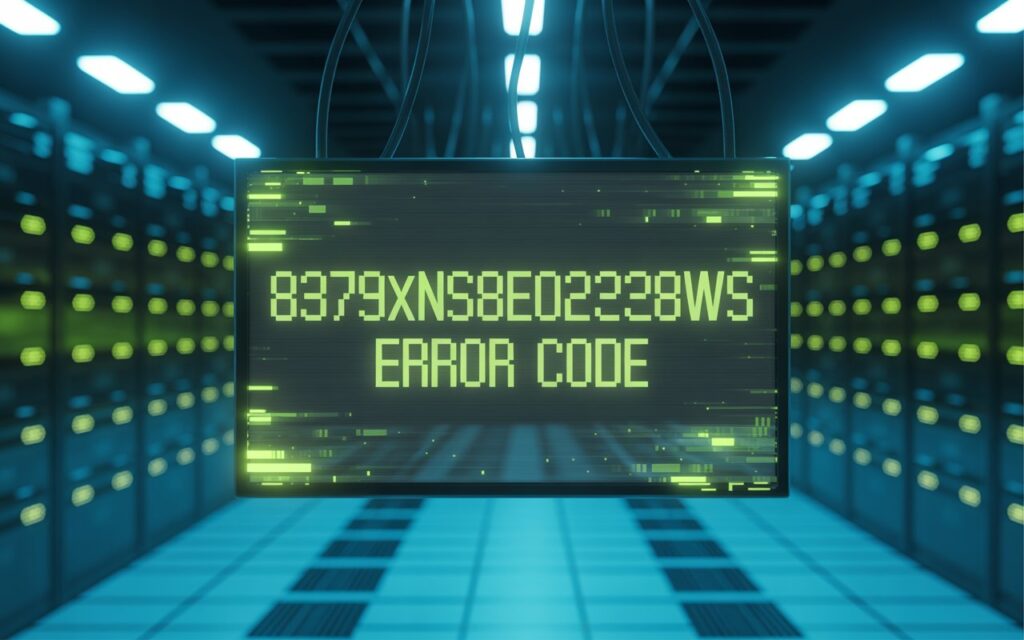Introduction
Few things frustrate users and developers more than an error message that seems completely meaningless. One such example is the mysterious 8379xnbs8e02328ws error code. At first glance, it looks like random characters with no obvious explanation. Unlike common system messages such as “404 Not Found” or “502 Bad Gateway,” this cryptic identifier provides no immediate clue as to what went wrong.
Yet, behind the obscurity, 8379xnbs8e02328ws often signals a deeper issue in a software stack, internal configuration, or backend service. Ignoring it can lead to system instability, security vulnerabilities, or even downtime. This article breaks down the meaning, causes, and solutions for the error—helping users, IT teams, and developers resolve it effectively.
What is 8379xnbs8e02328ws?
The 8379xnbs8e02328ws error code is not part of any public documentation or standardized error library. Instead, it usually appears in custom enterprise applications, proprietary systems, or legacy software stacks.
Unlike structured error messages, this one often acts as a placeholder for internal failures—triggered when the system encounters unexpected conditions it cannot map to standard errors. For example:
- A database query may fail silently.
- A third-party API may reject a request.
- A permission check may block user access.
In short, 8379xnbs8e02328ws is less about the string itself and more about the context in which it appears. Developers must trace logs, analyze workflows, and check dependencies to uncover the real cause.
Why This Error Matters
Errors like 8379xnbs8e02328ws might seem harmless at first, but they can have significant consequences if left unresolved. Some reasons why this error should not be ignored include:
- System Downtime – When critical processes fail, services may stop responding.
- Data Loss – Failed transactions or corrupted files can result in permanent data issues.
- Security Risks – Some triggers may indicate unauthorized access attempts or vulnerability exploitation.
- Customer Experience – For end-users, a sudden cryptic error leads to frustration and loss of trust.
- Hidden Complexity – Because the code is undocumented, diagnosing it takes longer and consumes developer resources.
Common Causes of the 8379xnbs8e02328ws Error
While the code itself doesn’t reveal much, patterns from real-world cases show that the error usually stems from one of the following issues:
- Configuration Errors
- Incorrect environment variables.
- Broken file paths or missing resources.
- Dependency Failures
- Outdated libraries or modules.
- Third-party services (APIs, plugins) failing silently.
- Permission & Authentication Issues
- Invalid API tokens.
- Misconfigured user roles.
- Database or Transaction Errors
- Data corruption during processing.
- Incomplete or failed transactions.
- Software Bugs or Update Conflicts
- Faulty patches.
- Version mismatches between services.
- Network or Connectivity Problems
- Server timeouts.
- Communication breakdowns between microservices.
Detecting the Error at the Right Time
Early detection can make all the difference in solving 8379xnbs8e02328ws before it disrupts operations. Signs include:
- The error appearing during login or authentication → likely permissions-related.
- Triggered while syncing data → may point to API or database failures.
- Occurring after software updates → suggests broken dependencies.
- Logs showing repeated failed requests without context → often a silent backend crash.
💡 Pro Tip: Always collect log files, timestamps, and user session data before attempting fixes. This ensures you’re targeting the actual cause rather than guessing.
Step-by-Step Troubleshooting Guide
Here’s a structured approach to resolving 8379xnbs8e02328ws:
| Step | What to Check | Why It Helps |
|---|---|---|
| 1. Review Logs | Application & system logs | Identifies the trigger event |
| 2. Verify Configurations | Environment variables, file paths | Detects misconfigured settings |
| 3. Validate Permissions | API keys, user roles, tokens | Resolves authentication issues |
| 4. Check Dependencies | Databases, APIs, libraries | Finds broken or outdated modules |
| 5. Patch/Reinstall Modules | Critical software packages | Fixes hidden corruption |
| 6. Test in Sandbox | Reproduce in dev/test environment | Isolates the root cause |
| 7. Document Findings | Record error context & fix | Builds future knowledge base |
Real-World Example: How a SaaS Company Solved It
A mid-sized SaaS provider repeatedly encountered the 8379xnbs8e02328ws error when users tried to generate PDF reports. After analysis, the team discovered:
- The system relied on an outdated reporting library.
- A silent failure occurred when the library attempted to access restricted OS-level resources.
- Updating the library and adjusting permissions resolved the issue.
This highlights how small, overlooked dependencies can trigger this otherwise cryptic error.
Challenges & Mistakes to Avoid
When troubleshooting 8379xnbs8e02328ws, many teams fall into these traps:
- Ignoring Logs – Skipping log reviews wastes time guessing the problem.
- Focusing on Symptoms, Not Causes – Restarting services may temporarily hide the error but doesn’t solve it.
- Overlooking Security Checks – Sometimes the code points to unauthorized access.
- Skipping Documentation – Without recording resolutions, teams repeat the same mistakes.
Developer Strategies for Long-Term Management
For developers maintaining large systems, proactive strategies help minimize encounters with 8379xnbs8e02328ws:
- Reproduce in Test Environments – Never debug directly in production.
- Version Control Dependencies – Lock versions to avoid mismatches.
- Implement Automated Testing Pipelines – Catch misconfigurations before deployment.
- Add Custom Logging – Supplement cryptic error codes with human-readable messages.
- Collaborative Documentation – Share fixes internally to save time across teams.
Security Concerns Around 8379xnbs8e02328ws
Because the error often relates to authentication or failed access, it can signal security vulnerabilities:
- Repeated failed logins could mean brute-force attempts.
- Silent API failures might indicate expired or stolen tokens.
- Misconfigured permissions can open backdoors for attackers.
👉 IT teams should always pair error resolution with a security audit, ensuring no deeper threats are present.
Preventing the Error in the Future
While no system is error-proof, teams can drastically reduce instances of 8379xnbs8e02328ws by:
- Regular System Updates – Keep libraries, databases, and APIs up to date.
- Configuration Audits – Validate environment setups periodically.
- Monitoring & Alerts – Use observability tools to detect anomalies early.
- Redundancy & Backups – Minimize downtime and data loss if the error recurs.
Future Trends: AI-Powered Error Management
As systems grow more complex, relying solely on human debugging is unsustainable. The next phase of handling errors like 8379xnbs8e02328ws lies in AI-driven observability tools:
- Machine Learning Models that predict failures before they occur.
- Automated Root-Cause Analysis that interprets cryptic codes.
- Self-Healing Systems capable of patching or restarting services automatically.
This proactive approach will transform error handling from reactive firefighting to predictive resilience.
FAQ
Q1: What is the 8379xnbs8e02328ws error?
It’s a non-standard error code found in custom or proprietary software, usually signaling deep system or configuration issues.
Q2: Can I fix it without developer help?
Basic checks like restarting, updating, or verifying network connections may help. But in most cases, logs and developer intervention are needed.
Q3: Does it indicate a security breach?
Not always, but failed authentications or suspicious triggers should be investigated with a security audit.
Q4: How often does this error occur?
Frequency depends on system health. In some setups, it may appear after every deployment; in others, only during rare edge cases.
Q5: What’s the fastest way to resolve it?
Start with logs, verify configurations, and check dependencies. If unresolved, escalate to developers with complete error context.
Conclusion
The 8379xnbs8e02328ws error code may appear mysterious and undocumented, but it’s far from unsolvable. By combining structured troubleshooting with proactive monitoring, teams can not only resolve the error but also prevent it from disrupting systems again.
Whether you’re an end-user facing frustration or a developer navigating backend complexity, the key is to look beyond the code—to the context, the dependencies, and the configurations that shape system behavior. With careful attention, documentation, and forward-thinking strategies, this cryptic error becomes just another challenge you’re equipped to conquer.

